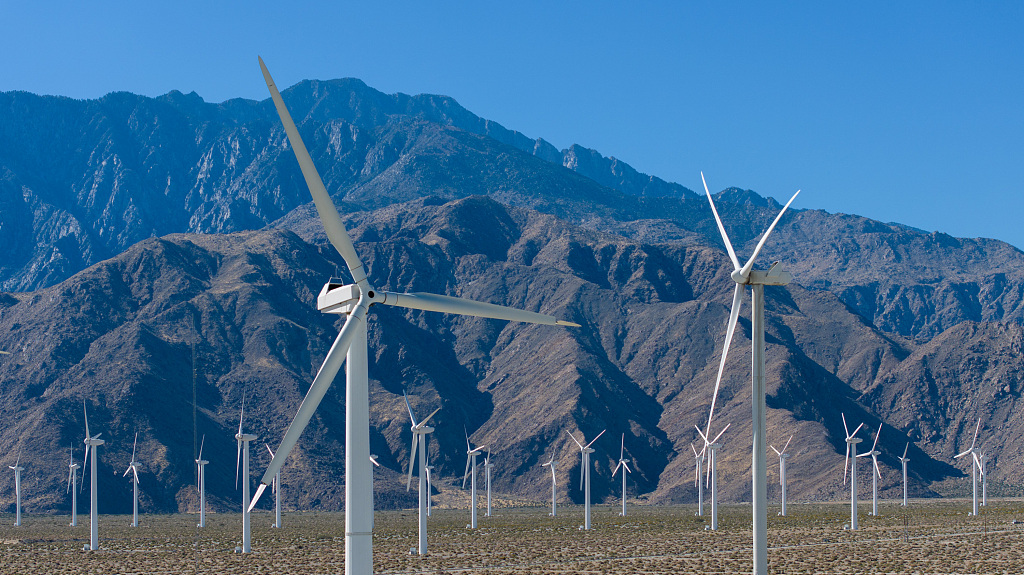Editor's note: Jin Jun is an associate professor at the School of Management, Zhejiang University. The article reflects the author's opinions and not necessarily the views of CGTN.
Mitigating climate change fosters a cooperative and symbiotic relationship between carbon neutrality, sustainable economic and social development, which is mainly manifested in the following two aspects.
On the one hand, actions to mitigate climate change and improve the ecological environment can yield direct and indirect economic benefits for socio-economic development. Green and sustainable development can propel the growth of society, from enterprises and businesses to regions and whole nations.
(1) New innovative entrepreneurial opportunities and job positions emerge in response to the need to slow climate change. Innovative entrepreneurship opportunities and employment positions related to carbon neutrality continue to sprout up. For example, as "carbon" becomes a strategic asset, enterprises have a substantial demand for professionals in carbon accounting and management, resulting in a surge of new job positions. Relevant technologies and market applications also attract a multitude of innovators and entrepreneurs.
(2) The industrial revolution is evident during the process of mitigating climate change, as emerging industries rapidly develop and gradually replace existing ones. For instance, the swift development of the new energy industry and its supporting sectors in recent years has driven the development of the energy storage industry. Additionally, new energy vehicles are gradually replacing traditional fuel ones, leading to changes in the competition landscape and core technologies of the automotive industry. The application of digital and intelligent technology aids the manufacturing industry in achieving the goal of green transition and carbon neutrality, contributing to the high-end transformation of industries and enterprises.
(3) Emerging strategic resources become crucial for enterprises to attract investment and financing. Green initiatives have become a resource for enterprises to attract investment and financing. ESG(environment, social and governance) ratings have become a crucial indicator of whether companies can obtain financing and loans. Carbon trading will also bring companies new revenue sources. Resources like sunlight, water, and wind have evolved into crucial resource endowments for enterprises and countries. Countries and regions abundant in these new and crucial strategic resources will witness shifts in their domestic and international influences.
(4) Demonstration of international competitiveness and industry leadership is linked to the capacity for green innovation and the ability to achieve carbon neutrality. These factors influence the proactiveness and competitiveness of various organizations and countries in global business activities and international business affairs, as well as their international image and market reputation. These capabilities have become essential tools and means to address regional crises. Companies like CATL and BYD have become industry leaders in the global new energy market. Chinese enterprises have contributed to the sustainable environmental and social development of regions including Asia, Africa, and Latin America, facilitating their development and growth in these regions. Meanwhile, the implementation of the EU’s Carbon Border Adjustment Mechanism (CBAM), for example, demonstrates that the ability to reduce carbon emissions will affect enterprises’ import and export costs and international competitiveness.
(5) Improved quality of life for people is a result of environmental protection and improvement, which reduces the adverse impact of harsh environments on health. This, in turn, lowers the demand for medical resources and elevates the overall quality of life, indirectly accelerating socio-economic development.
On the other hand, socio-economic development further promotes innovative entrepreneurial activities that mitigate climate change. Market-driven technological applications propel the iterative upgrading of green technologies, thus driving overall technological innovation. When people benefit from improved ecological environments, they become more receptive to related technologies and innovations, thereby propelling the development of related technological innovations and entrepreneurial activities. Moreover, when companies benefit from improvements in the ecological environment, they enhance their competitiveness and innovative capacity, boosting their ability to innovate related technologies and undertake entrepreneurial activities.
Therefore, the improvement of the ecological environment through mitigating climate change and the green and sustainable development of businesses are mutually influential and complementary, often leading to their coordinated development.


